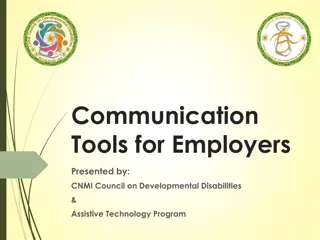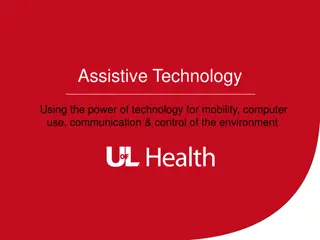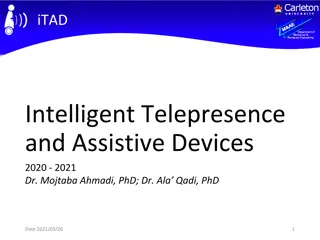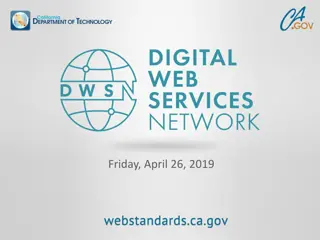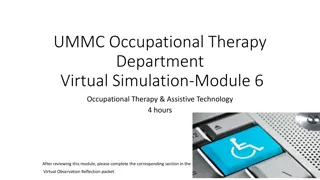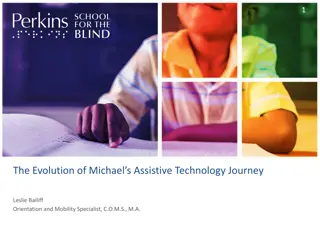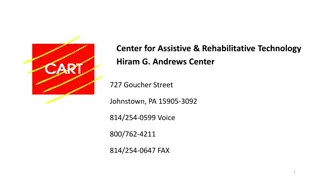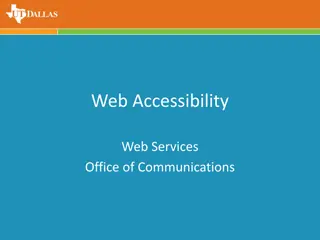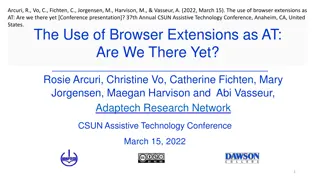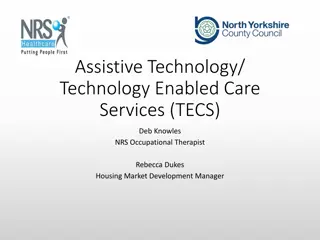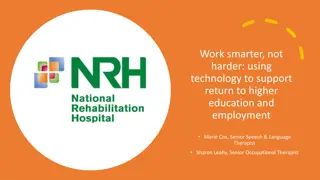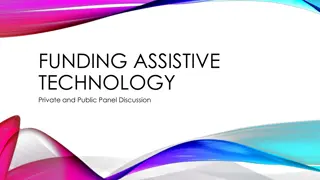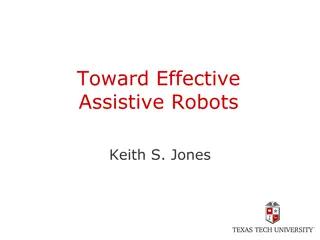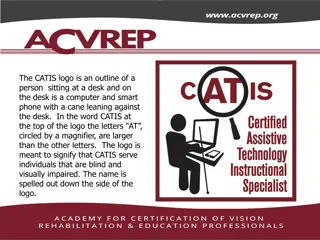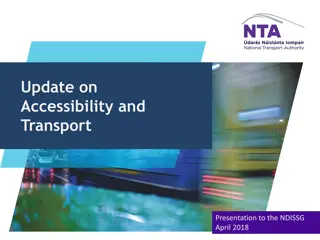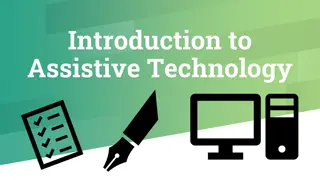Enhancing Computer Accessibility for the Differently Abled with Assistive Technology
Assistive technology plays a crucial role in enhancing computer accessibility for differently abled individuals. It includes a range of devices and tools that enable people with disabilities to perform activities of daily living independently. These technologies not only promote greater independence but also improve the quality of life for persons with disabilities. By facilitating access to computers, assistive technology opens up opportunities for increased social participation, security, and economic growth for the disabled community. Specialized assessment and remote adjustments further customize assistive technologies to meet individual needs, ensuring inclusivity and empowerment.
Download Presentation

Please find below an Image/Link to download the presentation.
The content on the website is provided AS IS for your information and personal use only. It may not be sold, licensed, or shared on other websites without obtaining consent from the author.If you encounter any issues during the download, it is possible that the publisher has removed the file from their server.
You are allowed to download the files provided on this website for personal or commercial use, subject to the condition that they are used lawfully. All files are the property of their respective owners.
The content on the website is provided AS IS for your information and personal use only. It may not be sold, licensed, or shared on other websites without obtaining consent from the author.
E N D
Presentation Transcript
Assistive Technology for the Differently Abled for Computer Accessibility Mrunalini
Assistive technology umbrella term includes assistive, adaptive, and rehabilitative devices PWD includes the process used in selecting, locating, and using them. Assistive technology can ameliorate the effects of disabilities that limit the ability to perform ADLs.
Uses of Assistive Tech promotes greater independence Enable PWD with the technology needed to accomplish tasks limited due to disability. For example wheelchairs provide independent mobility assistive eating devices can enable people who cannot feed themselves, to do so. PWD - more positive and easygoing lifestyle increase in "social participation, "security and control," "reduce institutional costs without significantly increasing household expenses.
Billion PWD - WHO their poverty rate is about twice as high. So technologies that could help disabled people contribute more in the workplace improve their quality of life If a million more disabled people could work, the economy would grow (1.7%).
Computer accessibility accessibility of a computer system to all people, regardless of disability type or severity of impairment. specialized hardware or software, or a combination of both, designed to enable use of a computer by a PWD. Specific technologies may be referred to as assistive technology.
Special-needs Assessment by an assistive technology consultant (such as an occupational therapist, a rehabilitation engineering technologist, or an educational technologist) to help them identify and configure appropriate assistive technologies to meet individual needs. remote desktop software and a web cam from home too the assessor logs on to the client's computer via a broadband internet connection, observes the users computer skills, and then remotely makes accessibility adjustments to the client's computer where necessary.
Technology for Multiple Sclerosis: Eyegaze Edge - fits in a suitcase. The technology behind Eyegaze is called Pupil Centre/Corneal Reflection, or PCCR. A tablet is set up in front of the user, with a small video camera underneath. A near-infrared LED (light-emitting diode) light illuminates the user's eye. The camera then measures the distance between the centre of your pupil and the reflection of LED light on your cornea - the transparent bit of your eye at the front. This tiny distance shifts as your gaze changes, and this enables a computer to work out exactly where you're looking.
Technology for Head control HeadMouse Nano - A camera tracks the movements of a reflective dot stuck to the user's forehead, and these motions control a computer cursor. Selections are made using a "sip-puff" switch in the mouth, or by dwell time - how long the head stays in a certain position. This device requires slightly more motor ability in its users, but is cheaper as they use cell phone technology.
Smart glasses for visually impaired "smart glasses" - accentuate the contrast between light and dark objects. This device represents the world in simple and unambiguous real-time images. The nearest image is bright, whereas the rest of the field is black, and the the contrast between them is cranked up to maximum. This is for Low vision people.
Talking hands for the deaf blind Deafblind people can communicate using tactical alphabets - pressing or pinching different parts of the hand representing different letters a way of turning these movements and touches into electronic signals via a special glove. Sensors in dbGLOVE turn these alphabet tracings into computer text, and actuators trace the letters back onto the hand. This enables deafblind people to operate computers and smartphones.
Prosthetic Limb for Physically Impaired Advances in 3D printing and bio-electronics are also helping replace missing limbs with prosthetics and give disabled people extra functionality. Myo enables a person to control computer devices by reading the electricity produced by their skeletal muscles and then sending these signals wirelessly via Bluetooth to the device. Myo "slides right on the arm, with no surgery or skin prep, and provides much more reliable signals than we can get with electrodes." The technology was originally developed to facilitate gesture-controlled presentations and has been used by DJs to control lighting displays.
Aims of Assistive TEch Allow PWD to "participate more fully in all aspects of life and increases their opportunities for "education, social interactions, and potential for meaningful employment". It creates greater independence and control for disabled individuals. These includes improvements in "cognitive, social, communication, literacy, motor, adaptive, and increases in engagement in learning activities both family professional caregivers benefit from assistive technology. The time needed caring for a patient significantly decreases for a family member or friend with the use of assistive technology. And if such assistive technology can be used by non-disabled people, too, it can be made more cheaply to the benefit of all.




